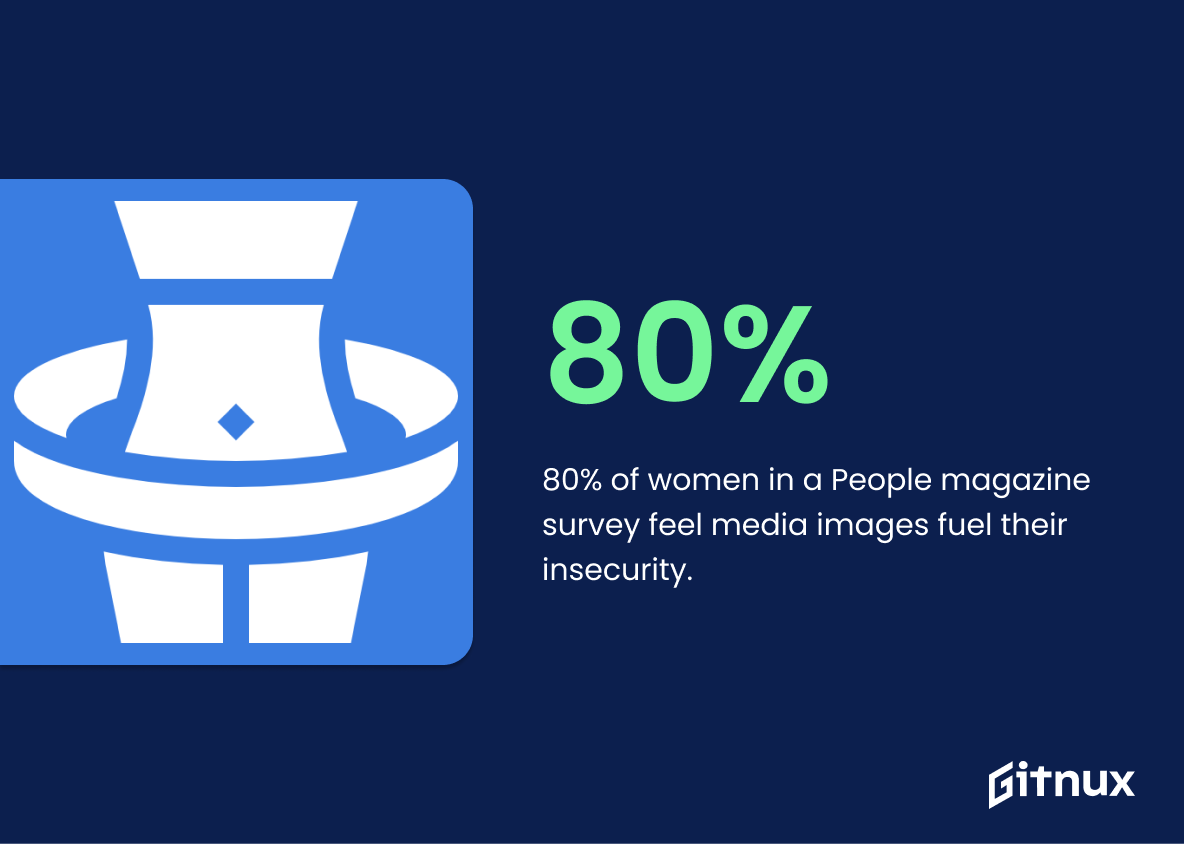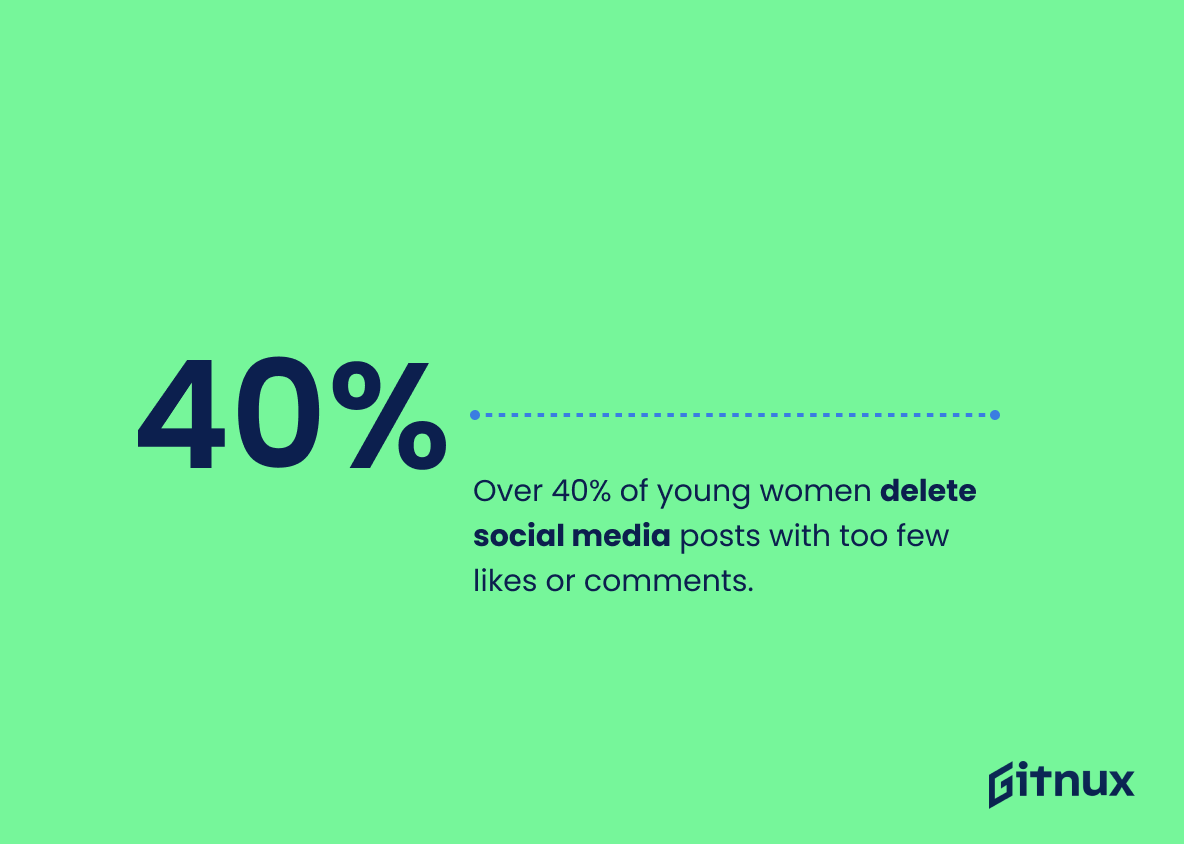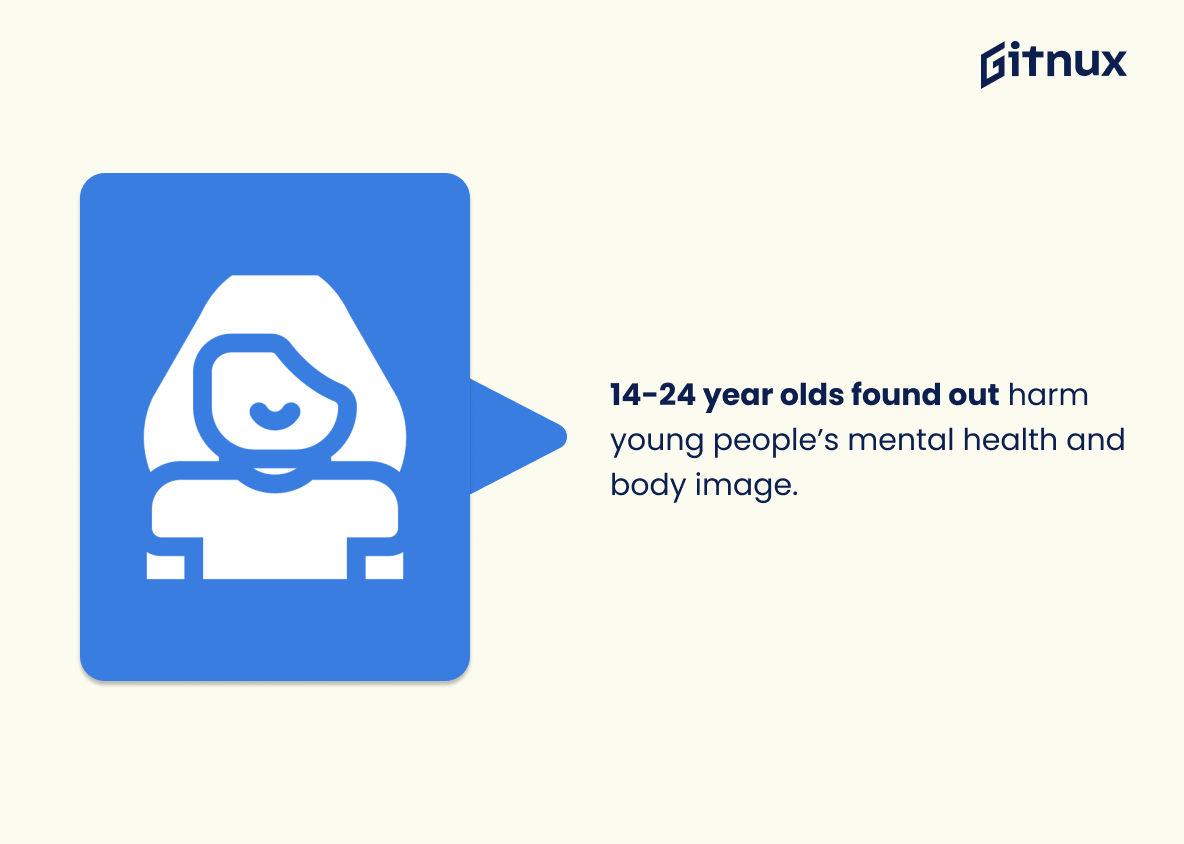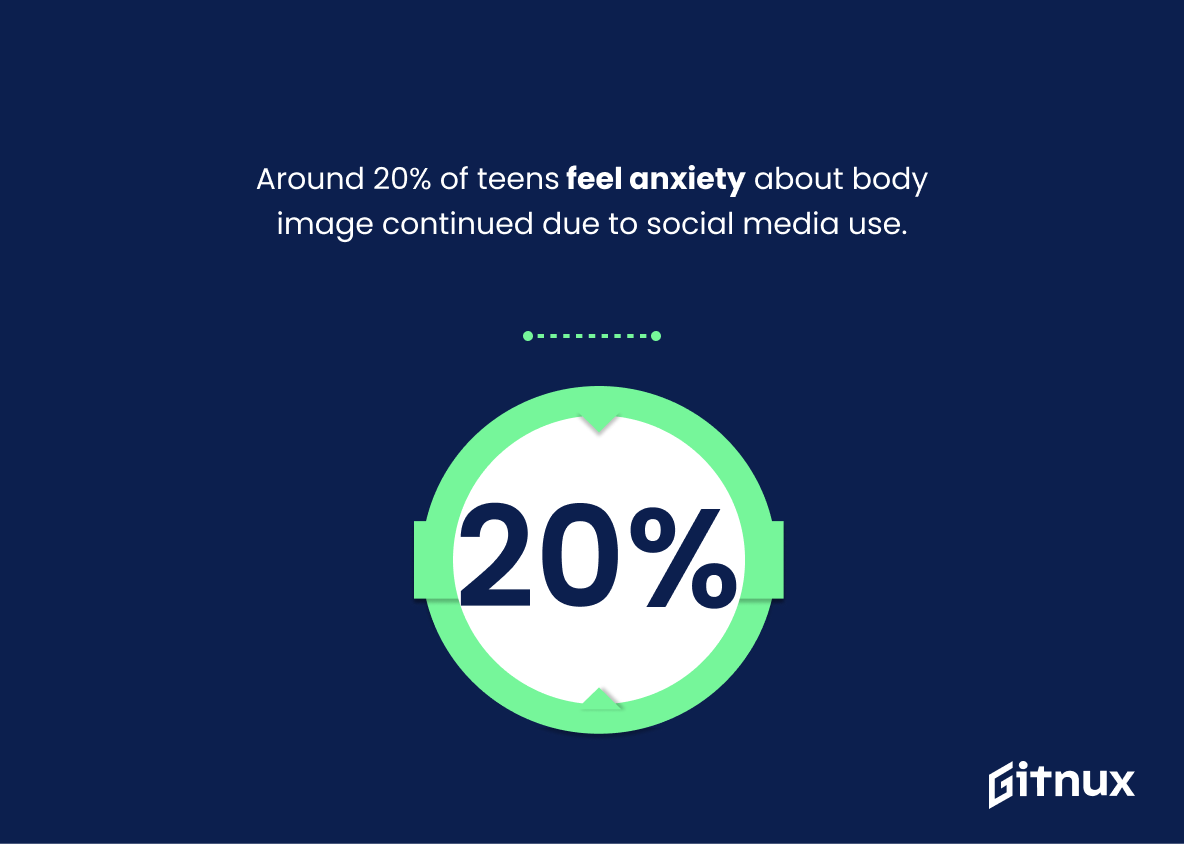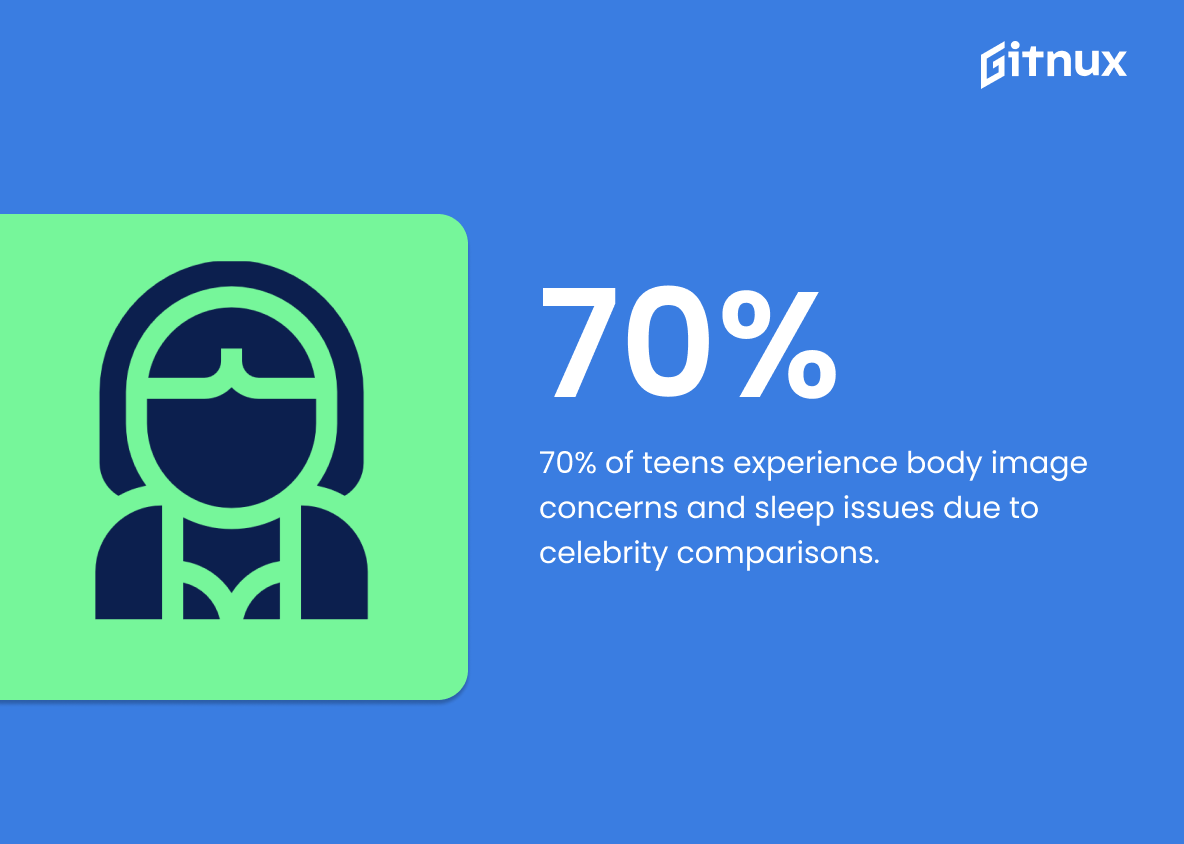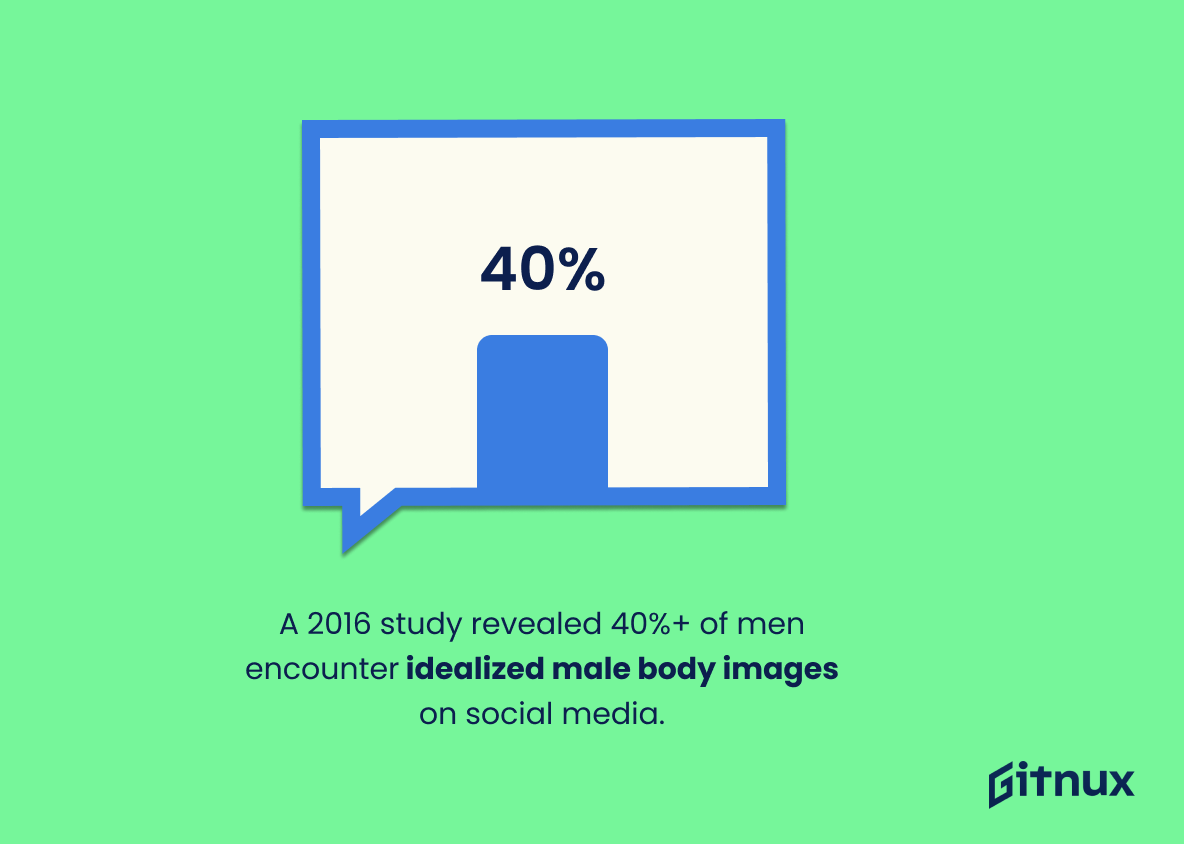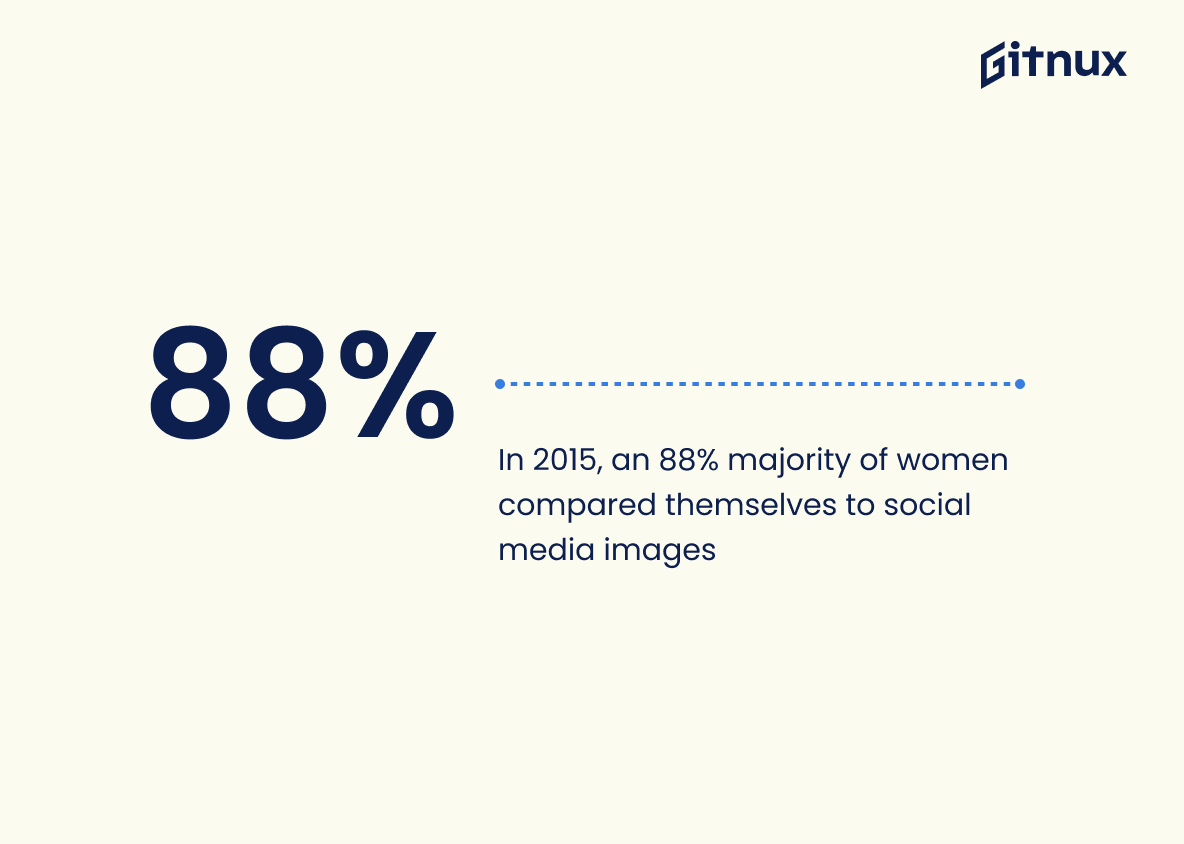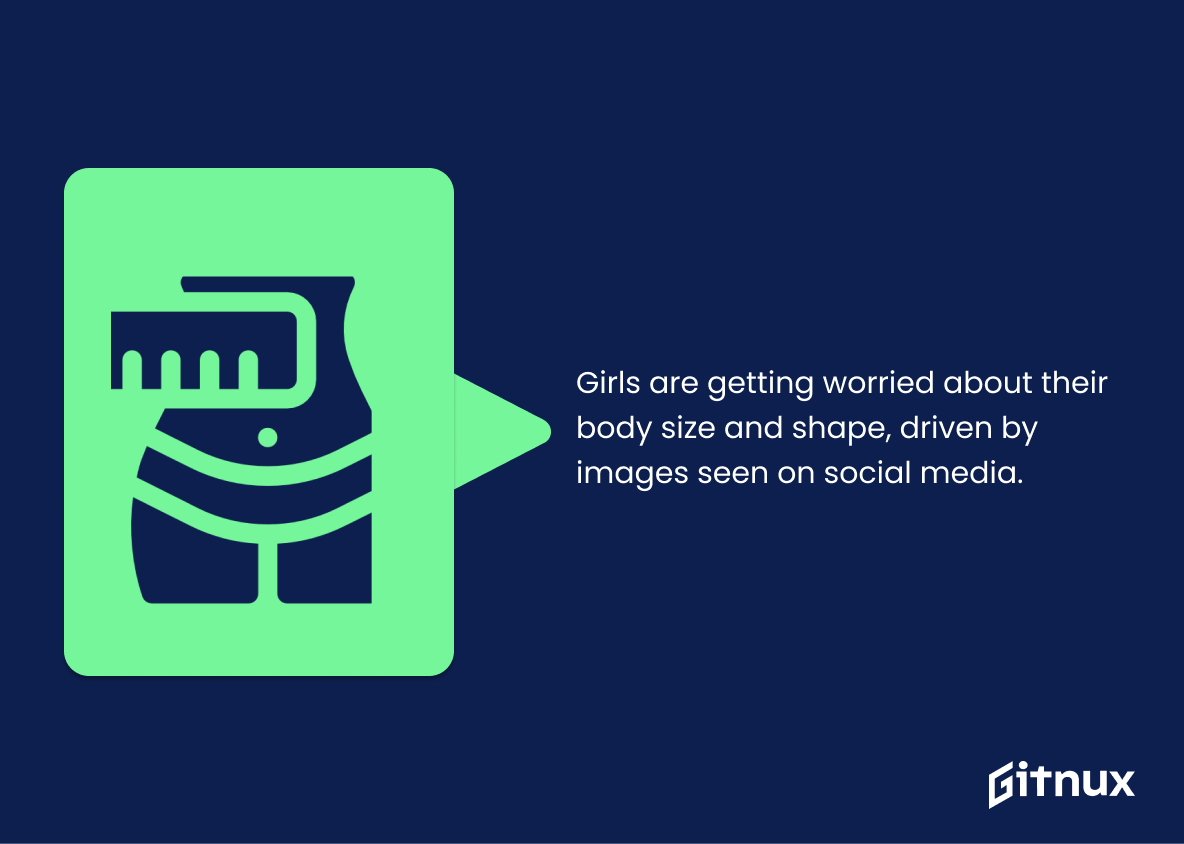In the digital era, social media has profoundly impacted various aspects of our lives. One such critical area is body image, perceptions of beauty and self-esteem, particularly among teenagers and young adults. With today’s cultural obsession with appearances and the endless stream of flawless, filtered images, the link between social media and body image is becoming increasingly complex. To better understand this dynamic, dive into this comprehensive blog that explores the latest social media and body image statistics. By shedding light on the numerical reality of this pressing issue, we aim to not only illustrate the extent of the concern but also, to provoke a conversation and instigate change.
The Latest Social Media And Body Image Statistics Unveiled
Around 80% of women who answered a People magazine survey stated the images they see in media make them feel insecure about themselves.
Highlighting a significant statistic such as ‘Around 80% of women who answered a People magazine survey stated the images they see in media make them feel insecure about themselves’ underlines a crucial point in social media and body image discourse. It showcases the powerful, and sometimes harmful, sway that media portrayals can exert on women’s self-perceptions and their understanding of body image. In the rapidly expanding digital landscape, such a high percentage is not merely a number; it echoes a pressing call for change in the way society perceives and promotes certain body ideals. This statistic underscores the urgent need for body positivity campaigns, inclusive representation, and wise media consumption habits, making it a pivotal reference for a blog post on Social Media And Body Image Statistics.
70% of teenage girls and young adult women say they have been influenced negatively by social media retouching and face-tuning apps.
Diving into this compelling statistic, we uncover a profound ripple effect in the realm of social media’s impact on body image. An alarming 70% of teenage girls and young adult women confess how societal standards, manipulated via social media retouching and face-tuning apps, have tarnished their self-perception. This striking number serves as a mirror reflecting a widespread issue affecting self-esteem and body image. In our blog post, discussing Social Media and Body Image Statistics, this fact bears weight. It illuminates the gravity of the challenge we’re exploring, underlining the urgency for global conversations, support systems, and possible solutions. The digit isn’t just data; it’s a doorway into the lived experiences of a significant majority, whose perception of beauty and self-worth is continually distorted by unrealistic, digitally-altered ideals.
Over 40% of young women delete social media posts with too few likes or comments.
The revelation that over 40% of young women erase their social media posts if they don’t receive the desired likes or comments paints a powerful image of how deeply social media has infiltrated our self-perception. In the realm of social media and body image, it exposes the high premium young women place on external social validation. The decision to withdraw posts with too few likes essentially reflects an internalized view that their worth is inextricably linked to the response they get online. As such, the statistic underscores the urgency of addressing the detrimental impacts of these virtual platforms on female body image, as they evidently contribute to self-esteem issues and the promotion of unrealistic beauty standards.
The Royal Society for Public Health surveyed 14-24 year olds in the UK and found that Instagram, Facebook, Snapchat, and Twitter all harm young people’s mental health and body image.
In the sphere of body image statistics related to social media, this particular statistic shines a spotlight on the pressing issue faced by today’s youth population in the UK. The Royal Society for Public Health’s survey unveils a startling, yet essential perspective of how major social media players like Instagram, Facebook, Snapchat, and Twitter are not friendly companions for young people’s mental health and body image. This insight amplifies the role of these platforms in dictating body ideals for teenagers and young adults. Furthermore, it serves as a wake-up call to parents, educators, policymakers, and the digital platform policymakers, hinting at a need for immediate action. Therefore, this statistic serves as a linchpin in framing discussions, arguments, and strategies in our blog post about social media and body image statistics.
Around 20% of teens feel anxiety about body image continued due to social media use.
Delving into the intriguing facet of the social media narrative, the statistic that details ‘Around 20% of teens experiencing anxiety about body image due to social media use’ paints an alarming picture. The power of this figure can’t be denied while discussing the impacts of social media on body image perceptions.
It exposes a reality of our digitally governed world; hinting at how profound the influence of social media can be on shaping teens’ self-perceptions. Encountering myriad body ‘ideals’ on these platforms sparks a cycle of comparison, anxiety, and self-doubt among young users.
This statistic arms us with evidence to champion an open dialogue about the potential pitfalls of social media, the importance of nurturing a positive body image and promoting mental health awareness. The inclusion of this statistic, therefore, not only validates our conversation but also sparks a call to action in the blog post about Social Media and Body Image Statistics.
According to a survey conducted by the University of Pittsburgh, young adults who spend a lot f time on social media are more likely to display negative body image concerns and eating disorders.
In the world of social media, the waves of photos, videos, and posts can often shape our self-perception, fostering potential insecurities and dissatisfaction, especially among young adults. This statistic from the University of Pittsburgh establishes a significant correlation between extensive social media use and negative self-image or even eating disorders.
This insight is a pivotal cornerstone in the context of a blog post about Social Media and Body Image Statistics, underscoring the profound psychological implications of habitual social media use. It offers readers a concrete piece of evidence illustrating how a seemingly innocuous pastime can subtly infiltrate our self-esteem and body acceptance.
From blogosphere to the real world, this alarming statistic triggers an important conversation about responsible social media use, mental health, and body positivity. Therefore, it’s not just another number, but it serves as a wake-up call, prompting us to reflect and engage in a much-needed dialogue about the indirect implications of our digital lives.
Teenagers who are active online are more likely to suffer from body image worries and sleeping problems, with 70% girls comparing themselves with celebrities.
With an eye-opening figure that 70% of adolescent females equate themselves to celebrities, this statistic lays bare the piercing influence of social media on teens’ perceptions of their bodies. Worryingly, trends like these contribute to the snowballing body image issues and sleep disturbances among teens, indicating a broader concern linked to intensive online activity. As we dive deeper into the blog post on social media and body image statistics, this data serves as a critical point of reflection. It underscores the indelible mark digital platforms leave on the young minds, nudging them into a universe of unfair comparisons and unrealistic body ideals. This escalating concern deserves our undivided attention, as it impacts the present generation’s wellbeing and sets the tone for future digital interactions.
A body image study conducted in 2016 found that over 40% of men say they see idealized images of the male body on social media.
This compelling piece of data serves to highlight the influence of social media on body image perceptions, particularly among men. Traditionally, body image discussions often heavily focus on women, yet this statistic drives home the point that men are by no means immune to these pressures. Through this fact, the blog post intensifies our understanding of the all-encompassing nature of social media’s impact. Scrutinizing these implications allows us to dissect the correlation between social media’s idealized body images and their potential effects on self-esteem and mental health in male users, expanding the scope of the conversation and creating a more inclusive discussion on body image.
A 2015 survey found that about 88% of women compare themselves to images they observe on social media, with over half of them finding the comparison unfavorable.
Highlighting this statistic underscores a prominent and pressing concern: the profound impact of social media on women’s perception of their bodies. The fact that in 2015 almost nine out of ten women found themselves making self-comparisons with social media images, and more than half of those comparisons were unfavorable, sheds light on a distressing digital-age issue.
From a social standpoint, these numbers underscore the rampant discontentment among women regarding their body image, arguably fueled by the constant exposure to predominantly unrealistic and highly curated content on social media. It’s the silent epidemic of inadequacy, undermining self-esteem and championing dissatisfaction with one’s natural appearance.
As digital reflections become the standard of beauty, this statistic serves as a revelation-thunderbolt that strikes at the heart of a blog post dissecting the link between Social Media and Body Image Statistics. It lends credence to the argument, providing readers with tangible evidence of how social media usage can distort our sense of self, emphasizing the need for discussion, awareness, and change.
According to an Australian research, girls as young as eight are getting worried about their body size and shape, driven by images seen on social media.
In the realm of social media, where virtual perceptions often clash with reality, this Australian research shines a spotlight on a concerning trend: girls as young as eight grapple with body image anxieties. This statistic embeds itself deeply into our understanding of the power wielded by social media. When unraveling the complex fabric of blogs about social media and body image statistics, we must acknowledge how social media platforms, awash with carefully curated and sometimes unrealistic body ideals, inculcate a sense of dissatisfaction, particularly in this vulnerable young demographic.
Caught in this vortex of comparison and self-scrutiny, these young girls find themselves venturing into the dark labyrinth of body dissatisfaction too early. This statistic passionately pleads the case for a more responsible, wholesome, and perceptibly real representation of body types and sizes in the media. It serves as a call-to-action, urging us to address this social media-infused body-image crisis. Remember, behind each statistic is a story, a conversation waiting to be started, much like this one, on the terrains of social media and body image.
Conclusion
In conclusion, the relevance of social media in our lives is undeniable and the part it plays in shaping our body image perception is significant. The statistics presented underline this correlation clearly and urgently infers the need for more responsible media literacy and usage. It’s crucial to remember that social media can be a force for good if we use it mindfully, promoting body positivity and realistic beauty standards. As consumers of such platforms, let’s strive to shift away from using social media as a comparative tool that negatively affects our self-esteem and instead, use it as a source of inspiration, self-expression, and healthy communication. May the numbers not only show the severity of the issue but also fuel conversations that bring about much-needed change in our digital-obsessed society.
References
0. – https://www.www.health.pitt.edu
1. – https://www.www.dailymail.co.uk
2. – https://www.www.refinery29.com
3. – https://www.www.bbc.com
4. – https://www.www.researchgate.net
5. – https://www.www.today.com
6. – https://www.www.rsph.org.uk
7. – https://www.www.girlguiding.org.uk
8. – https://www.www.statista.com
9. – https://www.people.com
